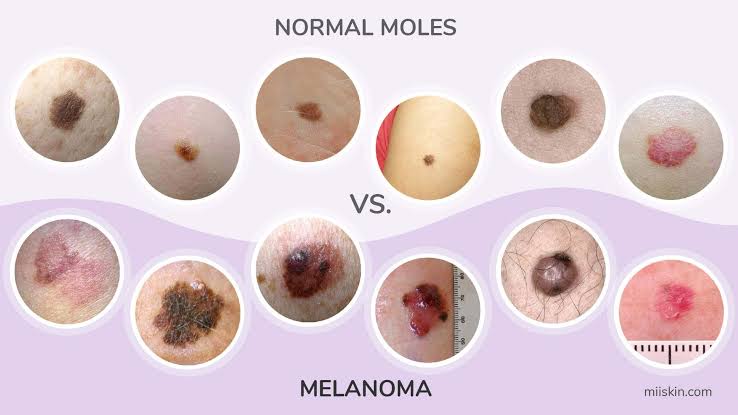
What is a mole?
A mole is a proliferation of cells called a nevus, which usually produce pigment. When such cells form a group, a swelling is formed in the skin and is effectively called a mole.
How is a mole formed?
Any mole is often formed due to a hereditary component, meaning that regardless of what the person does –
If he has a genetic predisposition to have moles on his body, he will develop moles. The second component is environmental and is related to the issue of exposure to sunlight.
Is a mole dangerous?
A mole is a benign tumor that is very common for many of us.
The problem begins when a type of skin cancer called melanoma appears, which is very dangerous because there is no cure for it yet, and which initially appears like just a “normal” mole, and the fear is that discovering it late could put a person’s life at risk.
How do we distinguish between melanoma and a “normal” mole?
The diagnosis is made by a dermatologist using a device called a dermatoscope.
This device contains a magnifying lens magnifying 10 times, which gives strong light without radiation. The dermatologist looks through a magnifying glass and identifies – according to the shape and structure of the mole – A
Whether it is a normal mole, a mole with suspicious characteristics that is recommended to be monitored, or a melanoma.
What distinguishes the form of melanoma?
Melanoma is characterized by its structure known as: “ABCDE”.
A = Asymmetry. A mole with an asymmetrical structure is more suspicious than a mole with a round structure.
B = Borders. A mole whose borders are not sharp and it is not clear where it begins and/or ends is a suspicious mole.
C = Color. A mole that has more than two colors should turn on a red light.
D = Diameter. A mole diameter greater than six mm indicates that there is a risk of melanoma.
E = Evolve. A mole that changes shape, color, size, bleeds, etc. should raise suspicions
After a mole is diagnosed as melanoma or a “normal” mole, what is the treatment?
It is recommended that people who have 20 or more moles have them checked at least once a year.
It is now possible to photograph in a special way and compare the skin, using a computer program, to see if there is a change in the quantity and/or shape of the mole after a year.
This image helps diagnose a small mole that has undergone a change that cannot be seen by the naked eye.
If there is development and changes according to the pictures, you must consult a doctor about removing that mole.
In cases where melanoma is discovered, the treatment is completely different.
What is the difference between moles in young people compared to the elderly?
In some people, the mole appears at an early age – nine or ten – or in the teenage years and grows over the years, as exposure to sunlight increases the frequency.
the growth.
At around the age of 20, the mole begins to grow deeper as well, so that eventually this mole protrudes and sometimes hair grows from it.
After the age of 30-40, new moles stop appearing, even if we are exposed to sunlight. During old age, their color fades and the moles remain prominent, but they lose their color.






